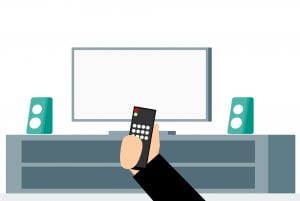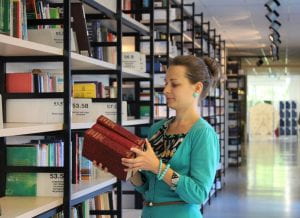I previously believed resourcing the curriculum entailed the teacher librarian (TL) choosing resources they thought appropriate for supporting the curriculum and reading for pleasure. I now know there are several steps in collection development and management and many elements in each. The processes are selection criteria and evaluation, collection evaluation and deselection (weeding). There are also ethical, budgeting and censorship issues to consider.
An important aspect for the collection is balance. This is more than a balance of fiction versus non-fiction or physical verses digital as I thought. Selecting resources incorporates learning styles, pedagogy, student abilities and backgrounds (IFLA, 2006, p.34). The collection also needs to be balanced in that it is diverse and inclusive of all students and perspectives (National Library of New Zealand, n.d.).
I am now aware of different ways of evaluating the collection (user and collection centred) to identify usage and gaps (Johnson, 2014, p.302). This is evident in the forum post ‘Using output measures as tools for purchasing’ (Silver, 2020a) and my reply to another student’s post in ‘Collection Analysis’ (Silver, 2020b).In the future, I will be able to use a larger range of strategies to gain more in depth evaluation of collection usefulness.
Curation is an important aspect of collection development to help users access useful resources. (Oddone, 2019). Curation can be equally applied to digital and physical resources. The TL can assist resource integration of cross-curriculum priorities (CCP) into programs through annotated bibliographies of available resources.
From my learning I was able to discern areas to build upon previous experiences in collection development and management. Some of these are detailed in the blog post ‘Resourcing the curriculum – collection development process’. (Silver, 2020c)
A librarian’s job is to provide information and multiple perspectives (IFLA, n.d). Many librarians self-censor to avoid controversy (Dawkins, 2018, p.9). One way to overcome this is by including the issue of censorship in the collection development policy (CDP). This allows the TL to raise the issue with the principal and gain their views and support (Dawkins, 2018, p.9). I will definitely use this strategy in the future.
Digital resources require a balance of infrastructure and accession costs (licences, fees etc) within the budget. Whilst digital resources can be evaluated by several of the same criteria as print, they also require specific evaluations. These need to take into account elements such as accessibility (indexes, interactivity) and features for users with special needs (read aloud, highlighting etc) There is also a need to consider factors such as technical issues, budgeting costs (initial purchase and on-going), legal and licensing issues and access (how and for how long, how many users at once, effects of cancellation).(IFLA, 2006 p.34).
A reluctant weeder in the past, I have come to the realisation that weeding is important to increase a user’s ability to find relevant, current material (Morgester, 2018, p.27). There are many ways to weed, other than appearance (the main criteria I used to use). Date and relevance to curriculum and user needs are important (Vnuk, 2015, p.6). It reflects badly on the library and undermines user’s confidence and work if resources are outdated in information or attitudes (National Library of New Zealand, n.d).
Increasing digital resources usage and their ability to be shared raises many copyright issues (Moody, 2018, p.10). The TL can use Creative Commons to educate staff and students on how they can responsibly share, and remix work. I have furthered my knowledge about copyright and school exemptions as outlined in the Educational Licencing agreements. By studying the regulation outlines on the Smartcopying website (ref), I was able to apply these to common school situations (blog post, forum copyright questions). I now feel more confident in aiding the school community in this area
Reflecting upon the readings the future of the library looks exciting with the library being a multi-faceted place of learning in the areas of study, reading, collaboration and creating (Loh, 2018, p.4). This supports and extends student learning in a variety of ways from individual study to collaboration. It is a case of not only providing digital resource for information but tools (physical and electronic) as well to help the school community to create and communicate their own knowledge (School District of Palm Beach County, 2019). A virtual presence for the library can be achieved with consideration to budget and access. Libraries can create libguides, databases, curate free web resources, embed instructions and provide access to digital resources (Boyers, 2016, p.6).
The CDP is an important documented library plan. It supports the school’s vision and values (ALIAS & VCTL, 2011, p.8) and provides a framework for achieving this (Gregory, 2019, p.29). The CDP ensures efficient guidance of resourcing by matching user needs to the collection to support teaching and learning (Agee, 2019, p.6). It can be used as a reference for issues regarding selection, acquisition, deselection decisions and material challenges (Johnson, 2018, p.86)
By regularly reviewing the CDP it will remain a strategic document to future proof the collection. This allows for changes in pedagogy, curriculum and technological developments to be accommodated. There is a need for the TL to keep up with trends and changes in technology within library services and schools. Sources such as the Horizon Report (2015) outline these trends which can influence the direction of the CDP.
Changes in the information landscape such as increasing use of digital resources and the internet influence what the CDP includes. For example, increasing use of mobile technologies widen the digital divide as more resources are available online (IFLA, 2016, p.8). Libraries can create more equality via provision of internet access, digital skills, an understanding of digital issues (privacy etc) and combating fake news (Robinson, 2018, p.14).
Changing curriculum needs within digital technologies needs consideration in the CDP to support teaching and learning. Both students and teachers will need to be able to access resources that are relevant to the curriculum. Keeping abreast with changes in the Australian Curriculum and relevant state syllabuses can influence the CDP. Knowing the changes allows for planning of resources to accommodate new curriculums, which can be listed as a curriculum goal or priority in the CDP.
The major realisation from this subject is that resourcing the curriculum is not the sole responsibility of the TL, it is a collaborative effort. Teachers as subject experts need to be involved in requesting resources (IFLA, 2006, p.34), the deselection process (New Zealand Library Services, n.d.) and curriculum mapping (Gregory, 2019, p.39). There are many other opportunities to involve the school community in the collection including patron driven acquisitions, surveys, and selection committees.
References:
Agee, S. (2019). Curate a digital collection for all learners. Knowledge Quest, 48(2), 6-7. www.knowledgequest.aasl.org
Australian Library and Information Association School, & Victorian Catholic Teacher Librarians. (2007). A manual for developing policies and procedures in Australian school library resource centres. http://www.asla.org.au/policy/policy-development-manual.aspx
Boyer, B. (2016). Meet Your Learners Where They Are: Virtualizing the School Library. Internet@Schools, 23(1), 4–6.
Dawkins, A.M. (2018). The decision by school librarians to self-censor: The impact of perceived administrative discomfort. Teacher Librarian, 45(3),8-12.
Johnson, P. (2014). Fundamentals of collection development and management.
Loh, Chin Ee. (2019). Envisioning the School Library of the Future: A 21 st Century Framework. https//.doi.org./10.13140/RG.2.2.32524.36489
Moody, G. (2018). Libraries are Under Attack: Here’s How They Can Fight Back. IFLA Trend Report. http://trends.ifla.org
Oddone, K. (2020, April 6). Digital content curation: How to do it right! [blog post]. https://scis.edublogs.org/tag/collection-development/
Robinson, C. (2018). Libraries Matter. IFLA Trend Report. http://trends.ifla.org
Silver, T. (2020a, April 16). Using output measures as tools for purchasing [Online discussion comment]. Interact 2. https://iteract2.csu.edu.au
Silver, T. (2020b, May 9). Collection analysis [Online discussion comment]. Interact 2. https://iteract2.csu.edu.au
Silver, T. (2020c, April 27). Resourcing the curriculum – Collection development process [blog post]. https://thinkspace.csu.edu.au/learningawaits/2020/04/27/resourcing-the-curriculum-collection-development-process/
Vnuk, R (2018). The weeding handbook: A shelf-by-shelf guide. ALA Editions.





